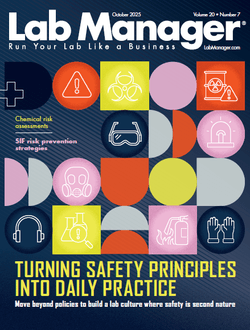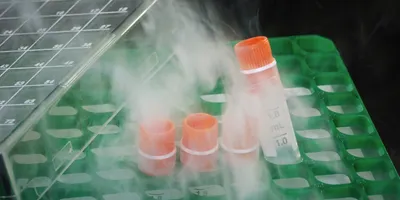Microplate readers are widely used in research, drug discovery, bioassay validation, QC, and manufacturing processes for the detection of biological, chemical, or physical processes in samples contained in microtiter plates.
Top 8 Questions You Should Ask When Buying a Microplate Reader
1. How many read modes are offered? Multiple read modes offer greater flexibility and value than single read modes for those working with, or considering the addition of, various assay platforms.
2. What kind of detection technology is used? Monochromatorbased detection offers flexibility, convenience and spectral scanning; while filter-based detection is characterized by precise sensitivity and may often switch rapidly between distinct wavelengths for kinetic assays. Hybrid detection systems combine both technologies in one compact unit for the utmost in flexibility and sensitivity.
3. Is it upgradeable? If so, can the upgrade be installed on-site, or must it be shipped back to the factory? On-site installations reduce overall downtime, and often the technician is available to answer questions or conduct training.
4. Is the reader automatable? Manual plate handling slows productivity as throughput increases. Automating the process with a compatible microplate stacker increases throughput with walk-away operation.
5. Ask about the software—is it integrated and user-friendly? Does it allow for pre-programmed and custom protocols? What kind of analysis is offered? How is data exported?
6. Is on-site training available? Is there a fee? On-site training provides an opportunity for all staff to learn about the reader, reducing the number of subsequent training needed.
7. What options are available? Options such as gas control, barcode scanning, shaking, and injecting increase assay flexibility for those that need these features, and as options, do not add additional unnecessary expense for those that do not need them.
8. What assay validation data is available for the reader? Assay validation data specific for the reader provides proof that the reader performs as indicated.
The Microplate Reader detection modes our readers are currently using, according to our latest survey data:
| Absorbance | 90% |
| AlphaScreen | 77% |
| Fluorescence polarization | 74% |
| Time-resolved fluorescence (TRF) | 62% |
| Time-resolved fluorescence energy transfer (TR-FRET) | 83% |
| Luminescence reader | 73% |
| Multi-mode reader | 75% |
| Microplate spectrophotometer | 63% |
Microplate Reader components our respondents are using in their labs:
| Centrifugation | 36% |
| Microplate washers | 36% |
| Microplate sealers | 18% |
| Barcode scanner | 13% |
| Additional stacker cassettes | 11% |
| Microplate robotics | 11% |
| Bulk dispensing | 10% |
| Microplate handlers | 8% |
| Labeling and sealing | 7% |
| Microplate stackers | 6% |
| High-speed robot | 5% |
| De-lidding stacker cassettes | 4% |
Top ten most important features/ factors in the decision-making process to buy a Microplate Reader:
| Important | |
| Software for data collection/analysis | 94% |
| Sensitivity | 91% |
| Ease-of-use | 89% |
| Product performance for intended application | 87% |
| Low maintenance/operating costs | 85% |
| Warranty | 85% |
| Service and support | 84% |
| Price | 79% |
| Resolution | 79% |
| Add-on functionality and upgrade capability | 75% |
Recently Released Microplate Readers
Synergy™ Neo 
• An HTS multi-mode microplate reader designed specifically for today’s screening and core laboratories
• Includes multiple parallel detectors for ultrafast measurements and laser-based excitation
• Also features super-fast plate stacker and high sensitivity on low volume assays
• Boasts a unique patent pending hybrid optical design • Incorporates a dedicated filter-based system
BioTek
www.biotek.com
SPECTROstar Nano
• Capable of performing assays quickly and easily in low-volumes, microplates, and via the built-in cuvette port
• Instantly captures a full UV-Visible spectrum (220 to 1000 nm) in less than 1 sec/well and it measures sample volumes down to 2 μL
• Features simple push button operation and the capacity to design individual assay protocols
BMG LABTECH
www.bmglabtech.com
SpectraMax Paradigm
• Now includes TUNE detection cartridge technology
• Included software reduces the assay set up time by more than 50%
• Allows users to read what they want, when they want
• Provides on-the-fly detection for reduced read times
• Features a plate format of up to 1536-wells and dual PMTs
• A good fit for high sensitivity and throughput demands
Molecular Devices
www.moleculardevices.com
TriStar²
• Employs the new patent pending optical concept ALL-4-ONE, for the first time enabling luminescence, fluorescence and absorbance measurements
• Also capable of reading FRET, BRET and BRET²
• In comparison to its predecessor the optics have been further improved and an improvement in detection limits in fluorescence has been achieved
Berthold Technologies
www.berthold.com
Microplate Reader Manufacturers
| Applied Biosystems | www.appliedbiosystems.com |
| Beckman Coulter | www.beckmancoulter.com |
| Berthold Technologies | www.berthold.com |
| Biochrom | www.biochrom-us.com |
| Bio-Rad | www.bio-rad.com |
| BioTek | www.biotek.com |
| BMG LABTECH | www.bmglabtech.com |
| Douglas Scientific | www.douglasscientific.com |
| Molecular Devices | www.moleculardevices.com |
| PerkinElmer | www.perkinelmer.com |
| Tecan | www.tecan-us.com |
| Thermo Fisher Scientific | www.thermoscientific.com |
| Turner Biosystems | www.turnerbiosystems.com |








